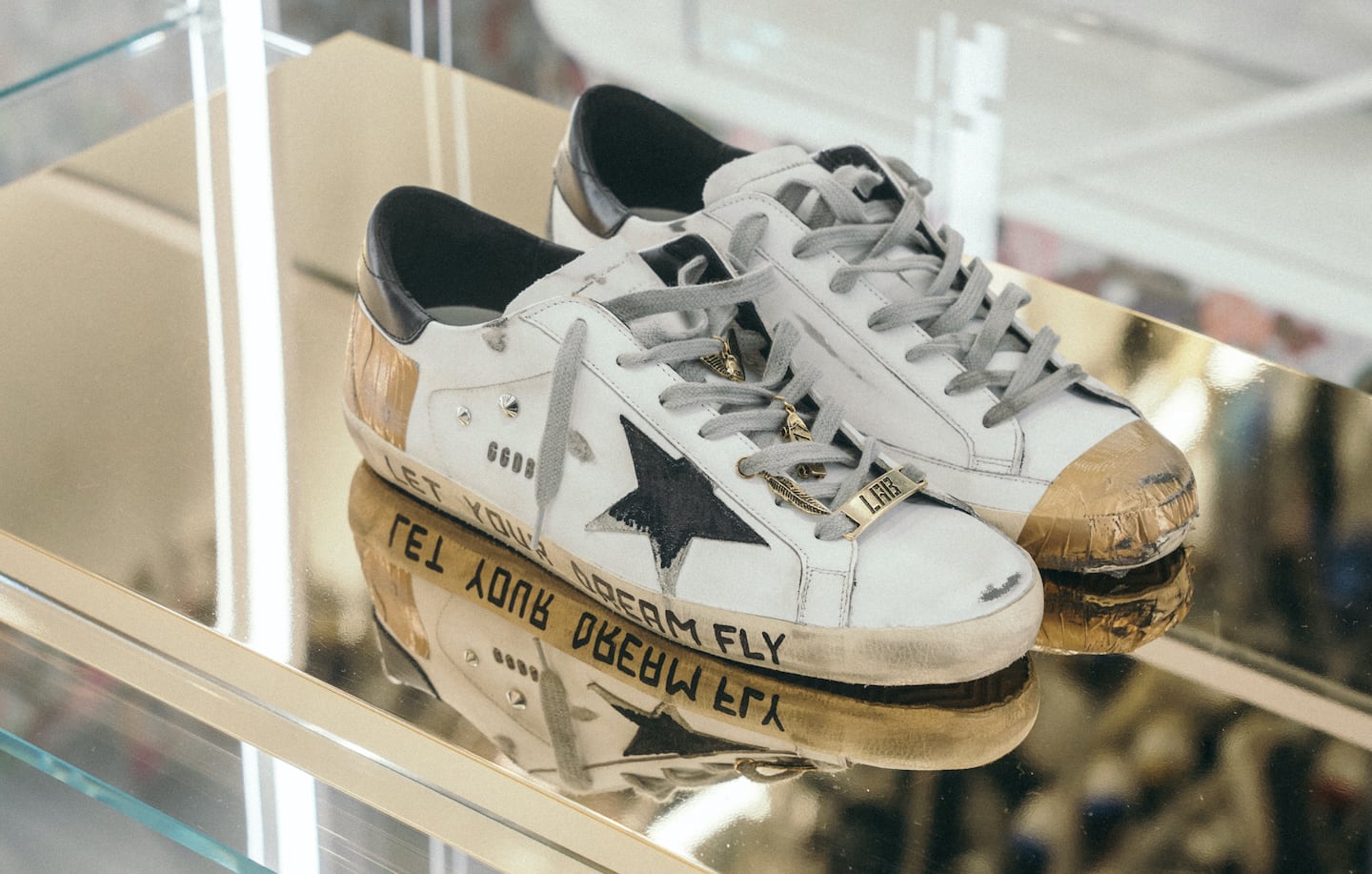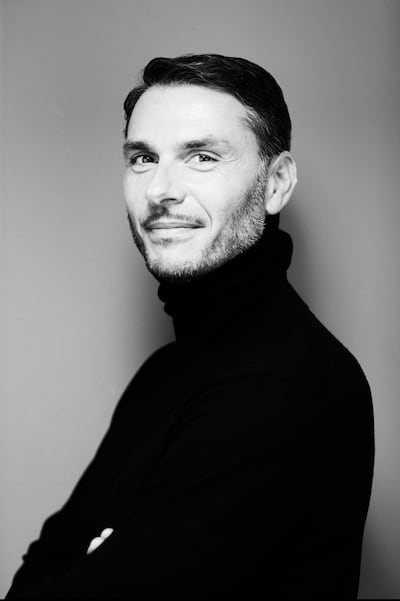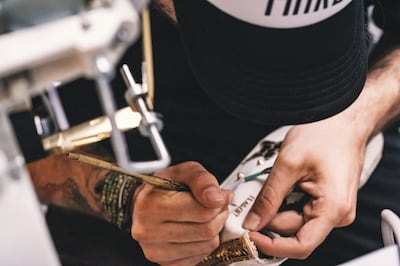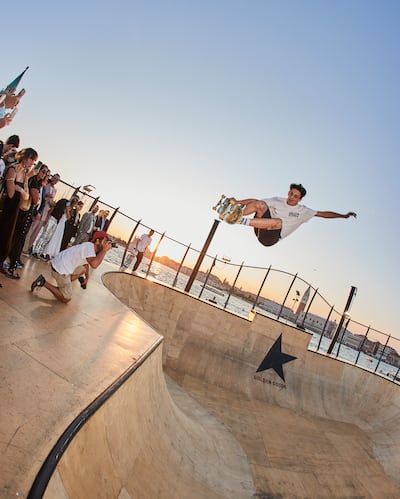
The Business of Fashion
Agenda-setting intelligence, analysis and advice for the global fashion community.

Agenda-setting intelligence, analysis and advice for the global fashion community.

MILAN — Bigger is usually better in the world of high-end fashion. In recent decades, sprawling conglomerates like LVMH and Kering have surged ahead of smaller rivals thanks to their marketing muscle, financial firepower and negotiating clout. Breakthrough stories like Moncler exist, but their rarity makes them all the more exciting.
That’s partly why investors have been betting on luxury sneaker “unicorn” Golden Goose, which nabbed a €1.3 billion valuation when it sold to private equity fund Permira last year, as well as raising €480 million in a bond sale in May. The Italian brand, which is known for applying metallic details and distressed finishes to classic skateboarding styles, grew its sales from €18 million in 2012 to €263 million euros in 2019, or around 35 percent per year.
That momentum helped the label weather the pandemic better than most rivals: while store shutdowns and travel bans aimed at slowing the spread of the coronavirus pushed down the luxury industry’s revenues by 23 percent, Golden Goose’s sales growth was slightly positive in 2020, while its high profitability remained intact with an EBITDA margin of 33 percent. That’s a wider margin than for luxury’s second-biggest brand by revenues, Chanel, whose profitability on sales of $10.1 billion fell from 32 percent to 25.5 percent last year.
Golden Goose didn’t always lay golden eggs, however. The label, formerly styled as Golden Goose Deluxe Brand Venezia, was started in 2000 as a lifestyle brand selling Americana-inflected wardrobe pieces at a contemporary price point. Founders Francesca Rinaldo and Alessandro Gallo’s central conceit — combining the craftsmanship of Venice, Italy with the style codes of Venice Beach, California — drew attention for tapping into the burgeoning market for relaxed but elevated looks, but the business didn’t start to scale up significantly until the introduction of sneakers in 2007.
ADVERTISEMENT
The shoes’ mix of sporty, classic shapes and glam details (including sequins, animal print patches, or metallic finishes) made them novel and familiar — and ahead of luxury fashion’s curve, as Hedi Slimane didn’t put white low-tops on the runway at Saint Laurent until 2012.
It turned out to be a transformative move: the sneakers took off as a cult item in Italy before spreading in the wider European market and the US, giving Golden Goose credibility in what would become a booming category. And while companies from Kering’s Gucci and Balenciaga or LVMH’s Dior Homme have since gone on to build substantial sneaker businesses, Golden Goose remains the most established label in this niche, seen by consumers as a “luxury sneaker brand” as opposed to a luxury brand that sells sneakers.

While party dresses and high heels have been making a comeback after shoppers spent months stuck at home during the pandemic, retailers and investors are still broadly convinced that sneaker sales will continue to boom.
“Casualisation is still at the beginning, and we’ve been great at understanding that trend before all the others,” chief executive officer Silvio Campara told BoF during a walkthrough of the brand’s new store in Milan.
An expansive, intensely personable 42-year-old who got his start on the Alexander McQueen shop floor and went on to hold commercial roles in Armani’s Asia division, Campara first joined Golden Goose as its commercial director in 2013 before taking the top job in 2018. As he stayed on with the company through successive rounds of private equity ownership including Belgium’s Ergon Capital, Carlyle Group and Permira, Campara also managed to become the company’s second-biggest shareholder.
With top luxury names pushing their prices skyward, the executive sees big opportunities for more accessible priced high-end propositions like Golden Goose (whose €400 sneakers are priced mid-way between Nike and Dior) or fellow Italian sportswear label Stone Island. “The market has been polarizing, everything is either luxury or it’s Zara. The space left is huge.”
With its new shop, next to Gucci in the city’s Montenapoleone district, Golden Goose is pushing into the realm of international luxury shopping hubs after years of targeting destination locations. In Paris, its Quai Voltaire location, near Acne Studios and Dries Van Noten, sits among art galleries and cafés, while a flagship in London’s Mayfair is around the corner from luxury thoroughfare Bond Street but closer to art gallery David Zwirner and the popular French bistro Aubaine.
Golden Goose has never invested in splashy runway shows to become top-of-mind in the fashion conversation, but the market for its sneakers has steadily grown via word-of-mouth, aided by sweet-spot pricing and that network of boutiques in busy hubs for well-heeled locals. Outside of Europe’s fashion capitals, the brand has had success meeting clients where they are: you can find the shoes at wholesale luxury boutiques like Soho Soho on the Isle of Spetses (a favourite getaway of the Athenian bourgeoisie) or Jane de Boy, a multi-brand in France’s Cap Ferret. In the US, its roster of flagships includes locations in Nashville, Tennessee and East Hampton in addition to more predictable hubs like New York’s Madison Avenue and Los Angeles’ Rodeo Drive.
ADVERTISEMENT
The destination retail strategy has helped to control the brand’s cost base, while the resulting focus on local clients helped it to weather the pandemic and bounce back more quickly this year: net turnover rose 53 percent during the first half to €167 million.
Golden Goose has its detractors, however: After more than a decade on the market, the shoes’ distressed finish was still referred to as “unrelatable” and “incomprehensible” by InStyle earlier this year. A 2018 model with tape across the toe marketed for $530 was broadly rebuked on social media, sparking criticism that the style fetishized poverty.

The success of its bond sale in May was seen by some not as a sign of the brand’s strength but as a sign of lenders making unusually risky moves. “Golden Goose is one example out of many which reflect the desperate search for yield,” Jochen Felsenheimer, managing director at XAIA Investment in Munich, told Bloomberg at the time.
Others see Golden Goose as having established itself in a durable niche. “Sneakers are part of people’s lifestyle now,” said Tiffany Hsu, fashion director at German e-tailer MyTheresa. “You have sneakers from luxury brands, but if you’re someone who wants something luxurious without spending quite that much, or you prefer not to buy your shoes from a luxury fashion brand, they basically take that market.”
Looking ahead, Campara is pinning the next stage of the brands’ development on a strategy rooted in “co-creation” of both online content and personalised products. The aim is to expand awareness and enrich clients’ understanding of Golden Goose as a brand — and a community: spotlighting Italian craftsmanship as well as its positioning as a more friendly, laid-back luxury brand as opposed to being a top-end arbiter of style. While sneakers are set to remain the core business, the brand hopes to rebalance its messaging to include its accessories, ready-to-wear and streetwear proposals again.
In Milan, the new boutique puts personalisation front-and-centre, with artisans on site ready to interview shoppers and help them “co-create” by adding graffiti, patches, glitter and studs to their purchases. Cameras record the process in order to offer clients souvenir videos that they can keep for themselves or rather post online, facilitating the brand’s marketing push. A sign exhorts shoppers to “Be You-nique.”
It’s the kind of direct, earnest approach that could either make shoppers cringe or drop $600 without blinking. Time will tell. The concept is set to be rolled out next to Paris’ Rue Saint Honoré and in Beijing’s Taikoo Li mall.
ADVERTISEMENT

To stay relevant in a world of e-commerce, stores need to shift their focus “from selling to co-creating, from storytelling to conversation,” Campara said. “Products can become the reminder of a story we experienced with you.”
The brand also staged a splashy activation in Venice this September, building a floating skate park for its 20th-anniversary bash and hosting appearances by Olympic skateboarder Cory Juneau and pop singer Mafalda, in another sign of the brand trying to create social media moments and to dial up its marketing muscle.
“Only a few brands have been able to define themselves through an amazing product,” Campara said. “Thanks to the success of our sneakers, we can afford to speak a bit louder now.”
Editor’s Note: This article was revised on 18th Monday 2021. An earlier version of this article misspelled the CEO of Golden Goose’s first name, Silvio. It also stated that Golden Goose’s 2019 revenues were €169 million. That is incorrect. Full-year revenues were €263 million.
Related Articles:
Golden Goose Acquired by Permira
Golden Goose’s First Bond Sale
The designer has always been an arch perfectionist, a quality that has been central to his success but which clashes with the demands on creative directors today, writes Imran Amed.
This week, Prada and Miu Miu reported strong sales as LVMH slowed and Kering retreated sharply. In fashion’s so-called “quiet luxury” moment, consumers may care less about whether products have logos and more about what those logos stand for.
The luxury goods maker is seeking pricing harmonisation across the globe, and adjusts prices in different markets to ensure that the company is”fair to all [its] clients everywhere,” CEO Leena Nair said.
Hermes saw Chinese buyers snap up its luxury products as the Kelly bag maker showed its resilience amid a broader slowdown in demand for the sector.